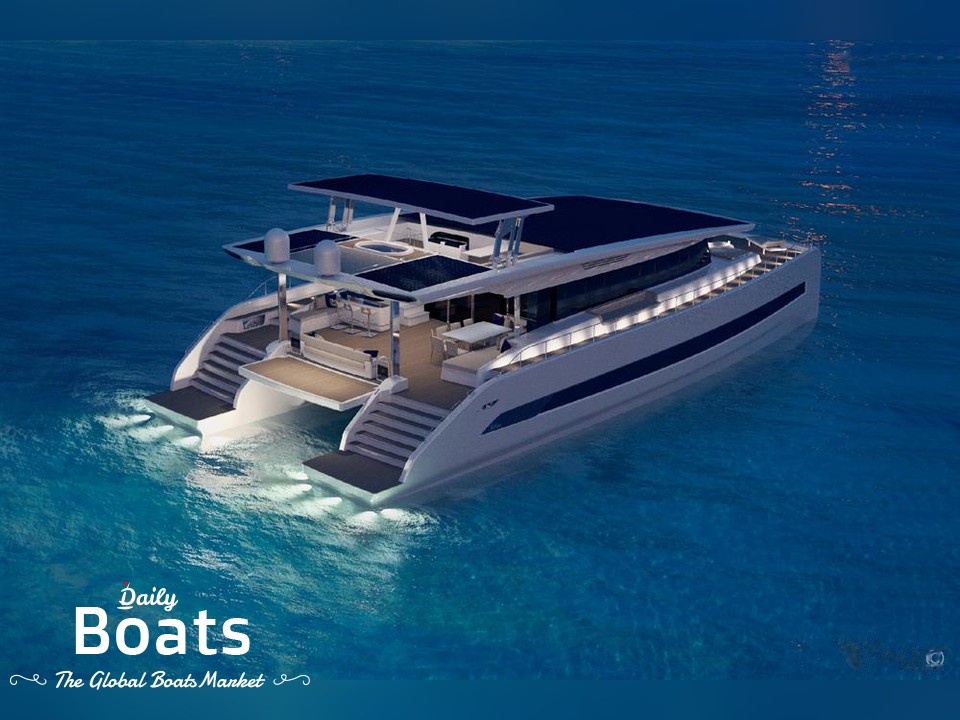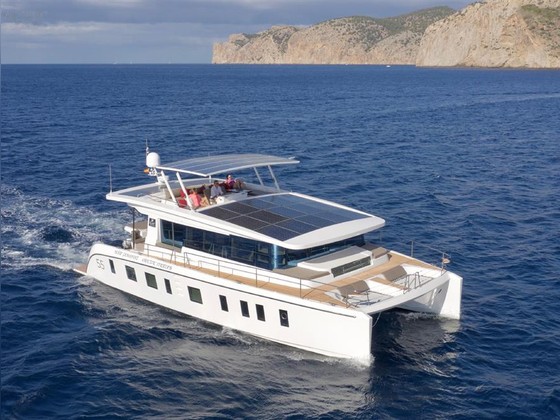Solar powered boats

Harness the suns energy to power your boat
Introduction
Solar power is becoming increasingly popular as a source of renewable energy. Solar boats are powered by the sun's energy, making them environmentally friendly and cost-effective. Solar boats are also highly efficient, using less energy than traditional petrol or diesel-powered boats.
There are a variety of solar boat models available on the market, including solar catamarans, yachts, and sailboats. Solar boats offer a clean and sustainable way to enjoy boating without harming the environment.
The Benefits of Solar Boats
The Environment
Solar boats are emissions-free, which is great for the environment. In addition, solar boats are often quieter than gas-powered boats, so they don't disturb the peace and quiet of nature.
Cost-Effectiveness
Solar boats are cheaper to operate than gas-powered boats because you don't have to keep buying gas. In addition, solar panels last a long time (20+ years) and require very little maintenance, so you'll save money in the long run.
Efficiency
Solar boats are more efficient than gas-powered boats because they convert more of the sun's energy into usable power. Gas-powered engines only convert about 20% of the fuel's energy into usable power, while electric motors can convert up to 90% of the sun's energy into usable power.

How Solar Boats Work
Solar Panels
Solar panels are the primary source of power for solar boats. They are typically made of silicon, a material that is very good at absorbing sunlight and converting it into electricity. Solar panels are usually mounted on the roof of the boat, where they can get the most exposure to sunlight.
Battery Storage
Solar boats typically have batteries onboard to store the electricity generated by the solar panels. This is important because it allows the boat to continue operating even when there is no sunshine, such as at night or in cloudy weather. The size and type of battery will vary depending on the size and type of solar boat.
Electric Motors
Electric motors are used to power the propellers on solar boats. They are very efficient, meaning that they convert a large amount of the energy from the batteries into propulsion power. Electric motors are also very quiet, making them ideal for use on boats where noise pollution is a concern, such as in national parks or other sensitive areas.
Solar Boat Models
Solar Catamarans
Solar catamarans are a type of solar boat that uses two parallel hulls for stability and to increase the surface area available for solar panels. Solar catamarans are typically used for leisure activities such as cruising or racing, but can also be used for commercial purposes such as fishing or transportation. Solar catamarans are usually powered by electric motors, although some models also have sails for added propulsion.
Solar catamarans come in a variety of sizes and configurations, with some models able to accommodate up to 12 passengers. The largest solar catamaran currently in production is the Sea Ray 610 Sundancer, which has a length of 18 meters (59 feet) and a width of 9 meters (30 feet). Solar catamarans typically have between 2 and 4 solar panels installed on their roofs, with the number of panels varying depending on the size and power needs of the particular model.
Solar Yachts
Solar yachts are a type of solar boat that combines the features of both traditional yachts and solar-powered boats. Solar yachts are typically larger than regular yachts, with many models measuring over 20 meters (66 feet) in length. Solar yachts also have significantly more solar panels installed on them than regular yachts, with most models having between 8 and 16 panels. This allows solar yachts to generate enough power to run all of the yacht’s onboard systems, including propulsion, lighting, air conditioning, and water pumps.
Solar yacht manufacturers include companies such as Sunseeker International, Beneteau Group, and Princess Yachts International. Some notable solar yacht models include the Sunseeker Predator 50SX, the Beneteau Oceanis 45SX, and the Princess 50SX. Solar yachts typically start at around $1 million USD, with prices increasing significantly for larger and more luxurious models.
Solar-Powered Sailboats
Solar-powered sailboats are a type of sailboat that uses both sails and one or more onboard solar panels to generate power for propulsion and other onboard systems. Solar-powered sailboats are typically smaller than regular sailboats, with most models measuring under 10 meters (33 feet) in length. This makes them more maneuverable than regular sailboats and ideal for use in areas with shallow waters or strong winds. Many solar-powered sailboats also have retractable keels or centerboards that allow them to be used in even shallower waters without running aground.
Solar-powered sailboats typically have 1 or 2 small solar panels installed on their decks near the stern (rear) of the boat. These panels generate enough power to run essential onboard systems such as navigation lights and communication equipment; they may also provide limited supplemental power for propulsion if needed. Some higher-end models may have additional panels installed that provide enough power to run all onboard systems without any need for sails or an auxiliary engine; however, these types of boats are still relatively rare due to their high cost.
Some notable manufacturers of solar-powered sailboats include Oday, Hobie Cat, and Sunfish. Popular models include the Oday Mariner 28, the Hobie Cat 16, and the Sunfish Laser. Solar-powered sailboats typically start at around $5,000 USD, with prices increasing for larger and more feature-rich models.
Conclusion
Solar-powered boats offer a number of advantages over traditional petrol or diesel-powered boats. They are more environmentally friendly, cost-effective, and efficient. Solar boats work by using solar panels to convert sunlight into electrical energy, which is then stored in batteries and used to power electric motors. There are a number of different solar boat models available, including solar catamarans, yachts, and sailboats.
If you're considering switching to a solar-powered boat, the benefits are clear. Not only will you be doing your part to help protect the environment, but you'll also save money in the long run. Solar boats are the wave of the future – so why not jump on board today?







